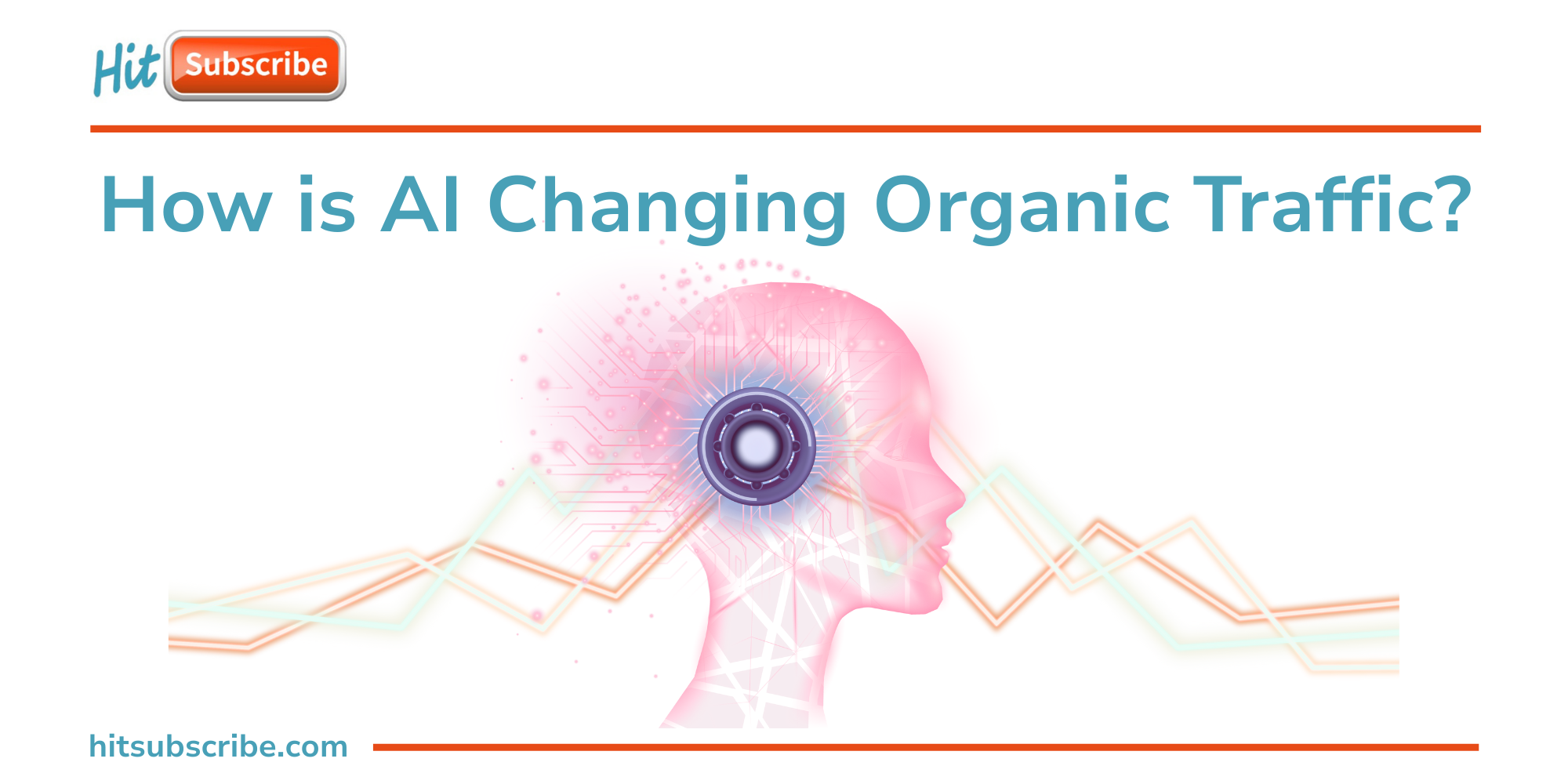The rise of AI and answer engines is changing how users consume content. These systems often display answers directly on search results pages, which can reduce click-throughs for certain types of content.
You may notice impressions growing while clicks decline. This happens when users see your content but get answers from AI widgets or other aggregators.
Some content types are more affected than others. Definitions, glossaries, and comparison articles are particularly vulnerable, as AI can summarize answers without sending users to your page. On the other hand, tutorials, guides, and detailed problem-solving content remain durable because AI cannot fully replicate their nuance and depth.
Even if click-through declines, your content is still crawled and leveraged by AI engines. This can contribute to brand awareness or referral traffic. By understanding these trends, you can shift your focus to content that performs well for both human readers and AI-driven contexts.
In this post, we explore how AI and answer engines are changing organic traffic and what it means for your content strategy.
Navigating SEO in the Age of AI and Answer Engines
 The first thing I want to say here is: nobody really knows exactly what’s going to work right now. Even the people building large language models don’t fully understand why these tools respond the way they do. That’s by design. It’s artificial intelligence. These systems are constantly learning, updating, and experimenting in ways that are opaque even to their creators.
The first thing I want to say here is: nobody really knows exactly what’s going to work right now. Even the people building large language models don’t fully understand why these tools respond the way they do. That’s by design. It’s artificial intelligence. These systems are constantly learning, updating, and experimenting in ways that are opaque even to their creators.
What works today might not work tomorrow, and signals that used to reliably drive traffic can behave unpredictably.
So any SEO consultant who claims to have the formula is overstating things. That includes me. Consider this my caveat emptor: I’m not in the business of gambling on predictions. Instead, I focus on practical, adaptable strategies that respond to real-time data and evolving user behavior. My approach centers on three key pillars:
- Monitoring signals – Keeping a close eye on trends like whether answer engines are cannibalizing traffic from your content, which pages are being affected, and how users are interacting with search results. This allows you to identify early warning signs before they become larger issues.
- Having contingency plans – Preparing for multiple scenarios instead of relying on a single approach. This might mean having alternate content formats, different distribution channels, or flexible topic strategies that can pivot if a shift in AI-driven search occurs.
- Adjusting tactics if and when changes hit – Being ready to refine or reframe content, update SEO strategies, or experiment with new formats based on what the data shows. The key is agility; the goal is to respond intelligently, not react emotionally.
By grounding your approach in observation, planning, and flexibility, you can navigate the uncertainty of AI-driven search while still capturing value and maintaining growth.
What We Know About AI and Search Behavior
Here’s what’s clearly happening in the search ecosystem:
Adoption of Answer Engines
People are increasingly asking longer, interactive questions directly in answer engines such as Google’s AI overviews, ChatGPT, Perplexity, and others. These tools are designed to provide immediate, concise answers without requiring users to click through to a traditional web page.
Data from sources like 39 Celsius shows a consistent pattern: impressions are up, but clicks are down. Translation: people are seeing your content more often, but they are clicking through less frequently. This shift means that visibility alone is no longer a sufficient metric for success. Understanding how users interact with AI-driven results is now just as important as ranking in traditional search.
Content Types Most Affected by AI
Certain content types are being hit harder than others:
- Definitions (e.g., “What is observability?”) are now directly answered in widgets, reducing the need for users to visit your page.
- Comparisons (e.g., “X vs Y”) also tend to drive fewer clicks, as AI engines often summarize the key points instantly.
On the other hand, some content types remain more durable:
- Tutorials, how-to guides, and step-by-step walkthroughs continue to perform well because AI cannot replicate the depth, nuance, or hands-on experience that these types of content provide. These formats still attract human readers who want detailed guidance or problem-solving insights.
This Trend Is Here to Stay
Don’t expect Google, Bing, or other AI-powered platforms to roll back these changes. The integration of answer engines into search is not temporary—it’s a fundamental shift in how information is delivered.
Adapting to this new landscape requires a long-term view and an understanding that traditional click-based SEO metrics may no longer tell the full story.
Growth Opportunities in the Age of AI
 Even with these changes, organic traffic can still grow and, in some cases, it is skyrocketing. Why?
Even with these changes, organic traffic can still grow and, in some cases, it is skyrocketing. Why?
The Question & Answer pattern is universal. People will always ask questions, and someone, human or AI, will provide answers.
The platform delivering answers may change. Google today, ChatGPT tomorrow, Reddit the next day. But quality Q&A content still wins. If your content clearly solves real problems or explains concepts well, it will find an audience no matter who or what shares it.
AI engines do not just replace clicks. Even if fewer people land on your page directly, your content informs answers, builds brand awareness, and drives indirect engagement.
Referral traffic from AI tools is also growing fast. These new paths may not look like traditional SEO, but they can help offset lost clicks and bring fresh audiences to your site. Focus on creating helpful, human-centered content that AI cannot fully replicate, and growth will continue even in the age of answer engines.
 Tactical Recommendations for AI-Driven Search
Tactical Recommendations for AI-Driven Search
What I would do:
-
Monitor Trends by Content Type
- Don’t just look at overall traffic. Break it down by content type (definitions, tutorials, comparisons) and by campaign.
- Identify what’s durable vs. declining.
-
“Human Up” Your Content
- LLMs may avoid echoing other AI content (to prevent model decay).
- The more human and original your content, the more long-term staying power it has.
-
Use Bing Webmaster Tools
- Bing has always been a distant #2, but AI engines use Bing heavily for crawling. It matters now.
-
Repurpose Declining Assets
- If your glossary is losing traffic, recycle it into other channels: email, sales collateral, LinkedIn posts, etc.
-
Focus on Content AI Struggles With
- Example: step-by-step tutorials (where ChatGPT often breaks halfway through).
- If AI fails, human SEO content still shines. (Another reason we should Stop Getting ‘Good’ at ChatGPT)
-
Create Showcase Content
- Don’t chase “best tool” lists (answer engines favor big brands).
- Instead, highlight use cases, pain points, and problem-solving content.
- Worst case: it doubles as sales collateral. Best case: crawlers surface it as a valid solution.
-
Watch Where AI Falls Back to Web Search
- If ChatGPT says, “Searching the web…” — that’s your opportunity. Those queries are gaps in its knowledge.
What I wouldn’t do:
-
Don’t try to “game” AEO (Answer Engine Optimization) the same way as SEO.
- Old SEO hacks (stuffing, manipulative tricks) won’t transfer. This is a different paradigm.
-
Don’t chase interactive Q&A topics
- For example, troubleshooting my problematic Jeep Grand Cherokee: AI is perfect for iterative Q&A.
- Traditional SEO content will lose in those spaces.
-
Don’t expect to outrank big brands in AI “best tool” answers
- Those results will skew toward established names with market share and social proof.
- Those results will skew toward established names with market share and social proof.
The Long-Term Perspective on AI and SEO
Human demand for well-crafted content is unlikely to disappear. AI and new search paradigms may shift distribution, but the value of answering real questions remains. Even as traffic sources diversify, the core principle holds: content that genuinely helps people will find an audience.
SEO isn’t dead, but it is evolving. By monitoring trends, adjusting for AI-driven shifts, and focusing on high-leverage, human-centered content, you can sustain growth, protect pipeline, and future-proof your content strategy.
Final Thoughts
AI is reshaping the way users find and interact with content, but it is not the end of organic traffic; it is a call to evolve. While answer engines may reduce clicks for certain content types, they also expand the ways your expertise can be discovered and leveraged.
By focusing on durable, human-centered content, monitoring trends, and adapting your strategy to this new landscape, you can continue to drive meaningful growth.
The key takeaway is that SEO is no longer just about rankings; it is about creating value that both people and AI engines recognize. Stay agile, stay human, and your content will remain relevant in the age of AI.
To learn more and get personalized guidance, drop us a line. We’d be happy to answer your questions and share insights.
Additional Reading
Thanks for reading! This is the third post in our three-part series on organic traffic. If you haven’t read the first two posts yet, you can check them out here:
- Post 1: The Lifecycle of Organic Growth: How SEO Evolves Over Time
- Post 2: Diagnosing Plateaus and Declines in Organic Traffic: A Step-by-Step Guide
Our CEO, Erik, hosted a webinar on this topic, and we used its transcript with ChatGPT to create this blog post.




